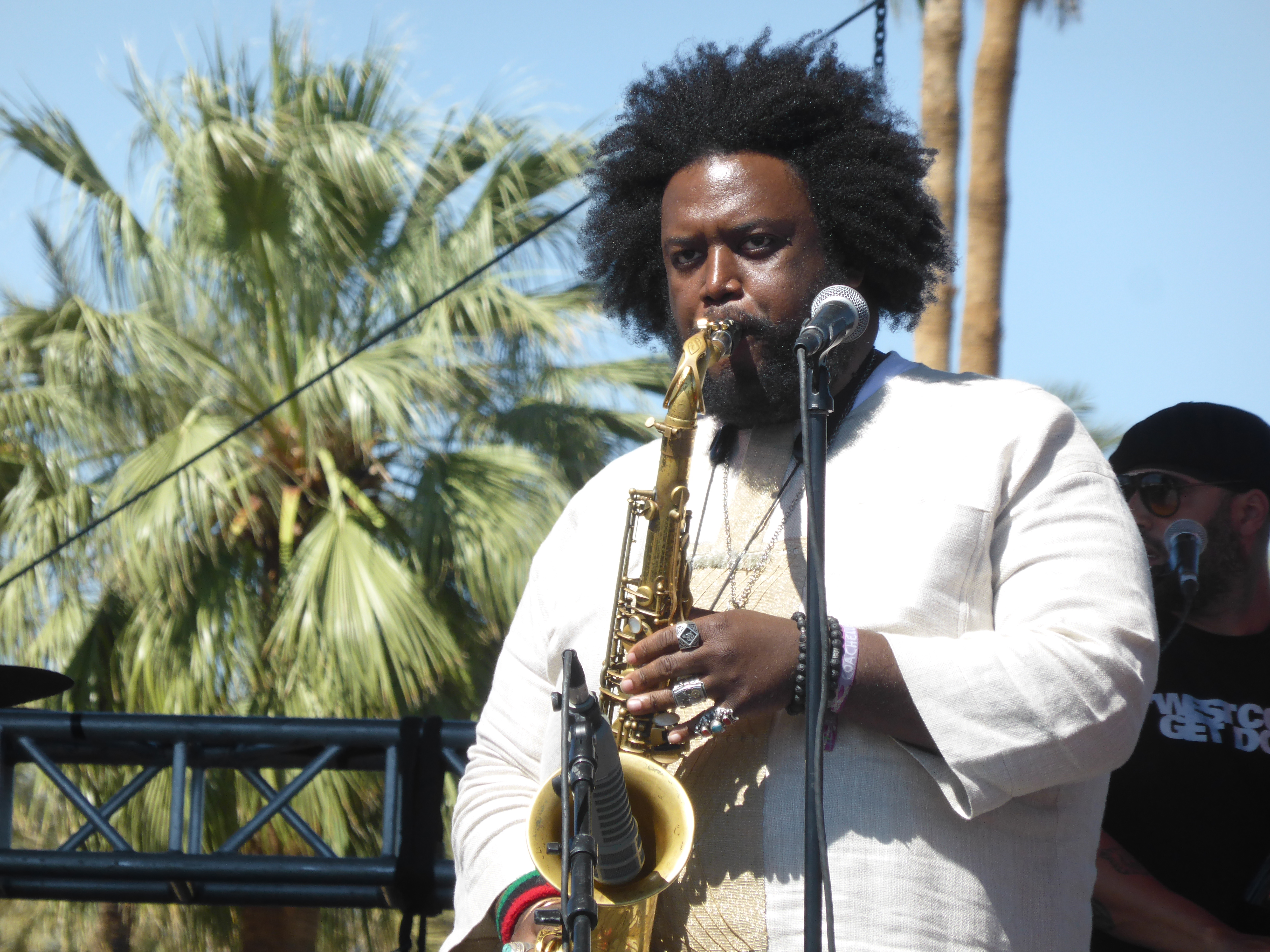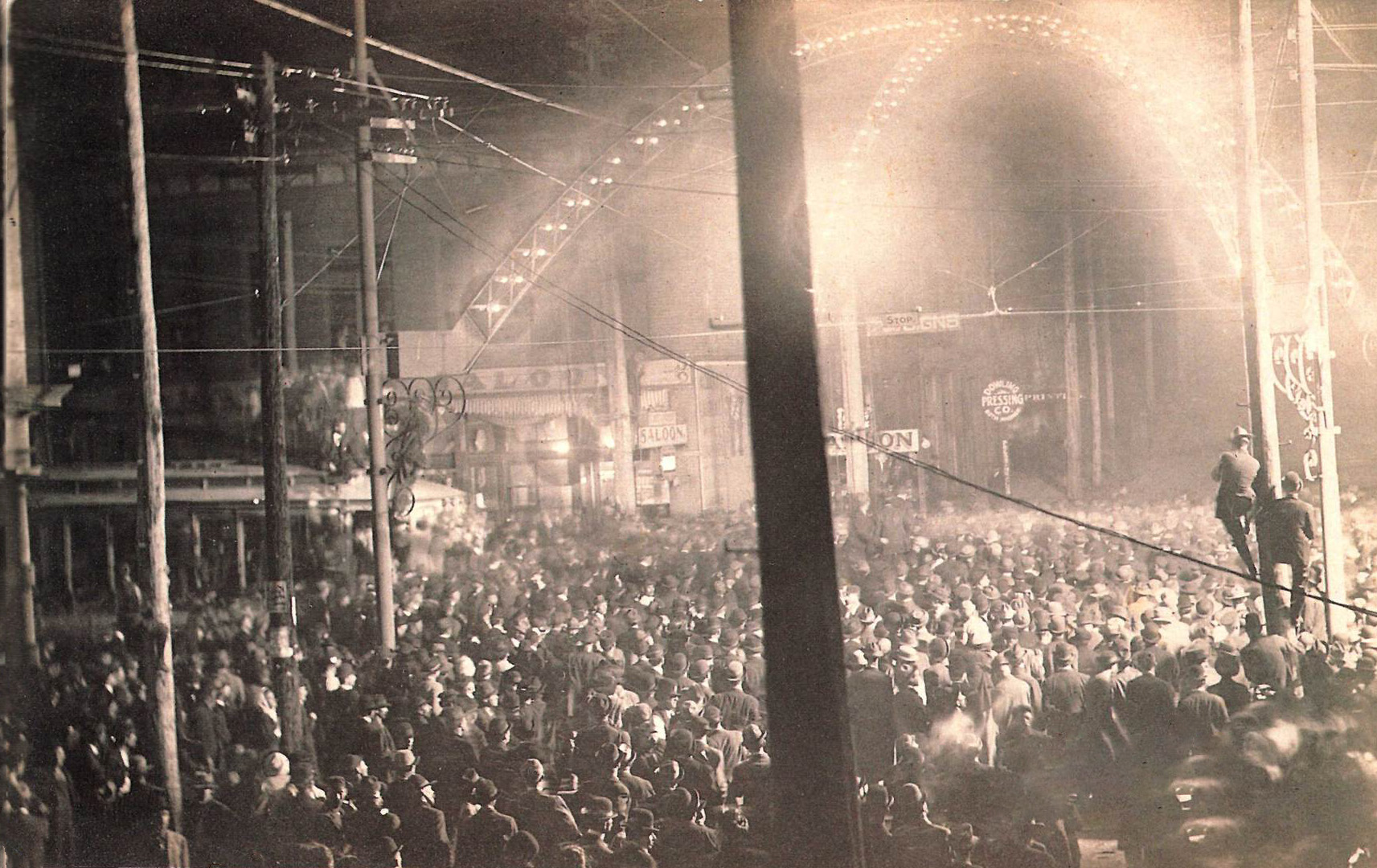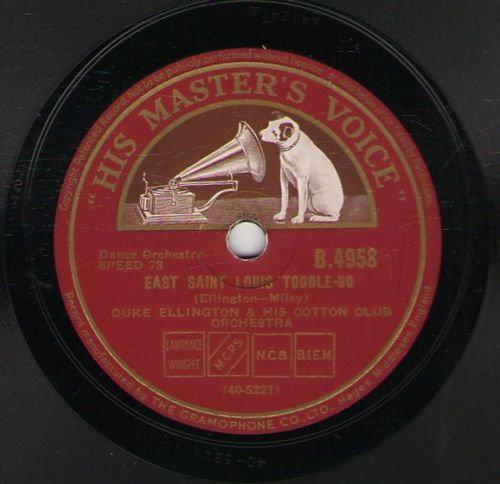|
Spiritual Jazz
Spiritual jazz (or astral jazz) is a sub-genre of jazz that originated in the United States during the 1960s. The genre is hard to characterize musically but draws from free, avant-garde and modal jazz and thematically focuses on transcendence and spirituality. John Coltrane's 1965 album ''A Love Supreme'' is considered landmark in the genre. Musical style Spiritual jazz does not follow a strictly defined musical style but generally features elements of free jazz, avant-garde jazz and modal jazz with influences from Asian and African music. Quartal harmonies, the Dorian mode, meditative sounds as well as the musical language of blues and bebop are often employed in spiritual jazz. Musicians frequently play instruments not traditionally used in jazz or western music, electric keyboards and utilise the recording studio as an instrument. History Origins Critics usually associate spiritual jazz with the 1960s but the beginnings of the genre can be traced to the 1940s and ... [...More Info...] [...Related Items...] OR: [Wikipedia] [Google] [Baidu] |
Kamasi Washington
Kamasi Washington (born February 18, 1981) is an American jazz saxophonist, usually playing tenor saxophone. Archived July 9, 2015. Career Washington was born in 1981 and raised in Los Angeles, California. He is a graduate of the Academy of Music of Alexander Hamilton High School in Beverlywood, Los Angeles. Washington next enrolled in UCLA's Department of Ethnomusicology, where he began playing with faculty members such as Kenny Burrell, Gerald Wilson, and Billy Higgins, who mentored a quartet with Washington, pianist Cameron Graves, and the brothers Stephen ("Thundercat") and Ronald Bruner. They released their debut album ''Young Jazz Giants'' in 2004 on Birdman Records. Washington joined the Gerald Wilson Orchestra for its 2005 album ''In My Time''.Blanco, Edward"Gerald Wilson Orchestra: In My Time."''Allaboutjazz.com'', January 4, 2006. Washington played saxophone on Kendrick Lamar's ''To Pimp a Butterfly.'' His debut solo recording, '' The Epic'', was released in Ma ... [...More Info...] [...Related Items...] OR: [Wikipedia] [Google] [Baidu] |
Quartal And Quintal Harmony
In music, quartal harmony is the building of harmonic structures built from the intervals of the perfect fourth, the augmented fourth and the diminished fourth. For instance, a three-note quartal chord on C can be built by stacking perfect fourths, C–F–B. : Quintal harmony is harmonic structure preferring the perfect fifth, the augmented fifth and the diminished fifth. For instance, a three-note quintal chord on C can be built by stacking perfect fifths, C–G–D. : Properties Use of the terms ''quartal'' and ''quintal'' arises from a contrast, compositional or perceptual, with traditional tertian harmonic constructions. Listeners familiar with music of the European common practice period perceive tonal music as that which uses major and minor chords and scales, wherein both the major third and minor third constitute the basic ''structural elements'' of the harmony. Regarding chords built from perfect fourths alone, composer Vincent Persichetti writes that: '' ... [...More Info...] [...Related Items...] OR: [Wikipedia] [Google] [Baidu] |
African Americans
African Americans (also referred to as Black Americans and Afro-Americans) are an ethnic group consisting of Americans with partial or total ancestry from sub-Saharan Africa. The term "African American" generally denotes descendants of enslaved Africans who are from the United States. While some Black immigrants or their children may also come to identify as African-American, the majority of first generation immigrants do not, preferring to identify with their nation of origin. African Americans constitute the second largest racial group in the U.S. after White Americans, as well as the third largest ethnic group after Hispanic and Latino Americans. Most African Americans are descendants of enslaved people within the boundaries of the present United States. On average, African Americans are of West/ Central African with some European descent; some also have Native American and other ancestry. According to U.S. Census Bureau data, African immigrants generally do not se ... [...More Info...] [...Related Items...] OR: [Wikipedia] [Google] [Baidu] |
Civil Rights Movement
The civil rights movement was a nonviolent social and political movement and campaign from 1954 to 1968 in the United States to abolish legalized institutional Racial segregation in the United States, racial segregation, Racial discrimination in the United States, discrimination, and disenfranchisement in the United States, disenfranchisement throughout the United States. The movement had its origins in the Reconstruction era during the late 19th century, although it made its largest legislative gains in the 1960s after years of direct actions and grassroots protests. The social movement's major nonviolent resistance and civil disobedience campaigns eventually secured new protections in federal law for the civil rights of all Americans. After the American Civil War and the subsequent Abolitionism in the United States, abolition of slavery in the 1860s, the Reconstruction Amendments to the United States Constitution granted emancipation and constitutional rights of citizenship ... [...More Info...] [...Related Items...] OR: [Wikipedia] [Google] [Baidu] |
George Lewis (clarinetist)
George Lewis (born Joseph Louis Francois Zenon; July 13, 1900 – December 31, 1968) was an American jazz clarinetist who achieved his highest profile in the later decades of his life. Ancestry Lewis was born in the French Quarter of New Orleans, Louisiana, United States. Through his mother, Alice Zeno, his maternal great-great-grandmother was a Senegalese slave who was brought to Louisiana around 1803. Zeno's family retained some knowledge of Senegalese language and customs until Alice's generation. Personal George married Emma Zeno in 1918 in New Orleans they had four children, Mildred Zeno-Major born 1919-1996; Joseph Zeno 1921-2003; William (Bill) Zeno 1923-1993; and George (Baby George) 1925-2005. Musical career During the 1920s, he founded the New Orleans Stompers. In the decade he also worked with Chris Kelly, Buddy Petit, Kid Rena, and was a member of the Eureka Brass Band and the Olympia Orchestra. In the 1930s, he played with Bunk Johnson, De De Pierce, and Billie P ... [...More Info...] [...Related Items...] OR: [Wikipedia] [Google] [Baidu] |
Mary Lou Williams
Mary Lou Williams (born Mary Elfrieda Scruggs; May 8, 1910 – May 28, 1981) was an American jazz pianist, arranger, and composer. She wrote hundreds of compositions and arrangements and recorded more than one hundred records (in 78, 45, and LP versions). Williams wrote and arranged for Duke Ellington and Benny Goodman, and she was friend, mentor, and teacher to Thelonious Monk, Charlie Parker, Miles Davis, Tadd Dameron, Bud Powell, and Dizzy Gillespie. Early years The second of eleven children, Williams was born in Atlanta, Georgia, and grew up in the East Liberty neighborhood of Pittsburgh, Pennsylvania. A musical prodigy, at the age of two, she was able to pick out simple tunes and by the age of three, she was taught piano by her mother. Mary Lou Williams played piano out of necessity at a very young age; her white neighbors were throwing bricks into her house until Williams began playing the piano in their homes. At the age of six, she supported her ten half-brothers a ... [...More Info...] [...Related Items...] OR: [Wikipedia] [Google] [Baidu] |
Zodiac Suite
''Zodiac Suite'' is a series of 12 pieces of jazz music written by Mary Lou Williams and first performed in 1945. Each song in the suite is inspired by an astrological sign and musicians or performers who were born under it. Williams began writing music for ''Zodiac Suite'' in 1942 and finished the composition in 1945. Williams first recorded the suite as part of a trio for Asch records and followed this with two notable performances with larger groups. The first performance was with a chamber jazz group and the second was with a symphony orchestra at Carnegie Hall. These performances took such a toll on Williams that she took a break from performing shortly afterwards. While the Asch recording was well received by critics, the contemporary reception to the two concerts was mixed. ''Zodiac Suite'' is notable as an early instance of the fusion of classical and jazz music. Williams's recording and initial performances of the suite have been recognised as breakthroughs in the h ... [...More Info...] [...Related Items...] OR: [Wikipedia] [Google] [Baidu] |
Duke Ellington
Edward Kennedy "Duke" Ellington (April 29, 1899 – May 24, 1974) was an American jazz pianist, composer, and leader of his eponymous jazz orchestra from 1923 through the rest of his life. Born and raised in Washington, D.C., Ellington was based in New York City from the mid-1920s and gained a national profile through his orchestra's appearances at the Cotton Club in Harlem. A master at writing miniatures for the three-minute 78 rpm recording format, Ellington wrote or collaborated on more than one thousand compositions; his extensive body of work is the largest recorded personal jazz legacy, and many of his pieces have become standards. He also recorded songs written by his bandsmen, such as Juan Tizol's " Caravan", which brought a Spanish tinge to big band jazz. At the end of the 1930s, Ellington began a nearly thirty-year collaboration with composer-arranger-pianist Billy Strayhorn, whom he called his writing and arranging companion. With Strayhorn, he composed multipl ... [...More Info...] [...Related Items...] OR: [Wikipedia] [Google] [Baidu] |
Black, Brown And Beige
''Black, Brown and Beige'' is an extended jazz work written by Duke Ellington for his first concert at Carnegie Hall, on January 23, 1943. It tells the history of African Americans and was the composer's daring attempt to transform attitudes about race, elevate American music (Jazz) on par with classical European music and challenge America to live up to her founding principles of freedom and equality for all. Form and characteristics ''Black'', the first movement, is divided into three parts: the ''Work Song''; the spiritual ''Come Sunday''; and ''Light''. ''Brown'' also has three parts: ''West Indian Influence'' (or ''West Indian Dance''); ''Emancipation Celebration'' (reworked as ''Lighter Attitude''); and ''The Blues''. ''Beige'' depicts "the Afro-American of the 1920s, 30s and World War II" according to Leonard Feather's notes for the 1977 release of the original 1943 performance. History Ellington introduced the piece at Carnegie Hall on January 23, 1943 as "a parallel to th ... [...More Info...] [...Related Items...] OR: [Wikipedia] [Google] [Baidu] |
Pharoah Sanders (1981) By Wojciech Soporek
Pharoah Sanders (born Ferrell Lee Sanders; October 13, 1940 – September 24, 2022) was an American jazz saxophonist. Known for his overblowing, harmonic, and multiphonic techniques on the saxophone, as well as his use of "sheets of sound", Sanders played a prominent role in the development of free jazz and spiritual jazz through his work as a member of John Coltrane's groups in the mid-1960s, and later through his solo work. He released over thirty albums as a leader and collaborated extensively with vocalist Leon Thomas and pianist Alice Coltrane, among many others. Fellow saxophonist Ornette Coleman once described him as "probably the best tenor player in the world". Sanders' take on "spiritual jazz" was rooted in his inspiration from religious concepts such as Karma and Tawhid, and his rich, meditative performance aesthetic. This style was seen as a continuation of Coltrane's work on albums such as ''A Love Supreme''. As a result, Sanders was considered to have been a discip ... [...More Info...] [...Related Items...] OR: [Wikipedia] [Google] [Baidu] |
Recording Studio As An Instrument
In music production, the recording studio is often treated as a musical instrument when it plays a significant role in the composition of music. Sometimes called "playing the studio", the approach is typically embodied by artists or producers who favor the creative use of studio technology in record production, as opposed to simply documenting live performances in studio. Techniques include the incorporation of non-musical sounds, overdubbing, tape edits, sound synthesis, audio signal processing, and combining segmented performances ( takes) into a unified whole. Composers have exploited the potential of multitrack recording from the time the technology was first introduced. Before the late 1940s, musical recordings were typically created with the idea of presenting a faithful rendition of a real-life performance. Following the advent of three-track tape recorders in the mid-1950s, recording spaces became more accustomed for in-studio composition. By the late 1960s, in-studio c ... [...More Info...] [...Related Items...] OR: [Wikipedia] [Google] [Baidu] |
Bebop
Bebop or bop is a style of jazz developed in the early-to-mid-1940s in the United States. The style features compositions characterized by a fast tempo, complex chord progressions with rapid chord changes and numerous changes of key, instrumental virtuosity, and improvisation based on a combination of harmonic structure, the use of scales and occasional references to the melody. Bebop developed as the younger generation of jazz musicians expanded the creative possibilities of jazz beyond the popular, dance-oriented swing music-style with a new "musician's music" that was not as danceable and demanded close listening.Lott, Eric. Double V, Double-Time: Bebop's Politics of Style. Callaloo, No. 36 (Summer, 1988), pp. 597–605 As bebop was not intended for dancing, it enabled the musicians to play at faster tempos. Bebop musicians explored advanced harmonies, complex syncopation, altered chords, extended chords, chord substitutions, asymmetrical phrasing, and intricate melodi ... [...More Info...] [...Related Items...] OR: [Wikipedia] [Google] [Baidu] |
_by_Wojciech_Soporek.jpg)





.jpg)


